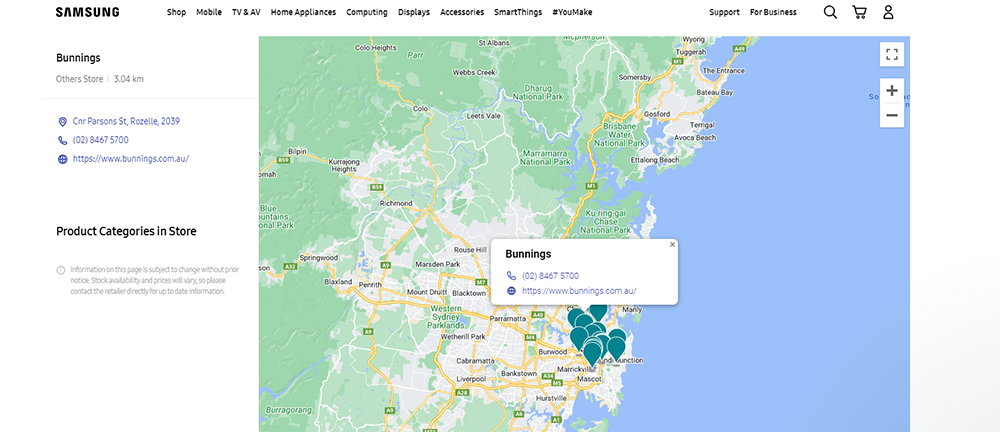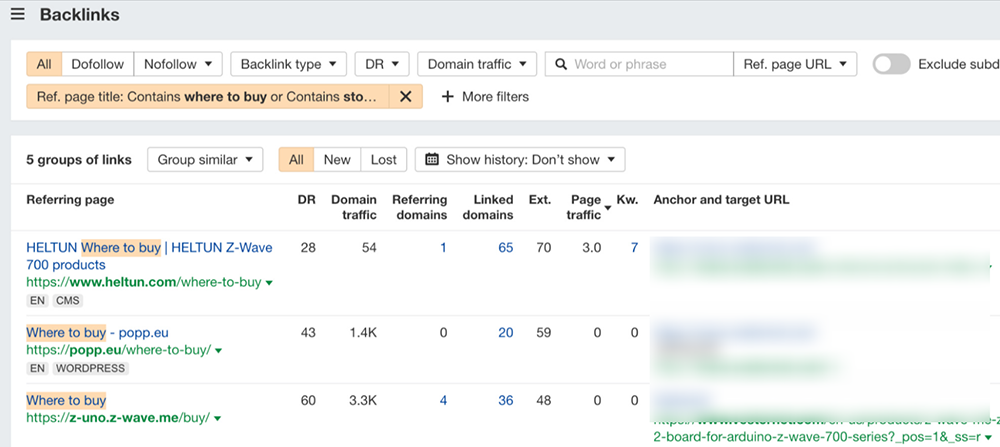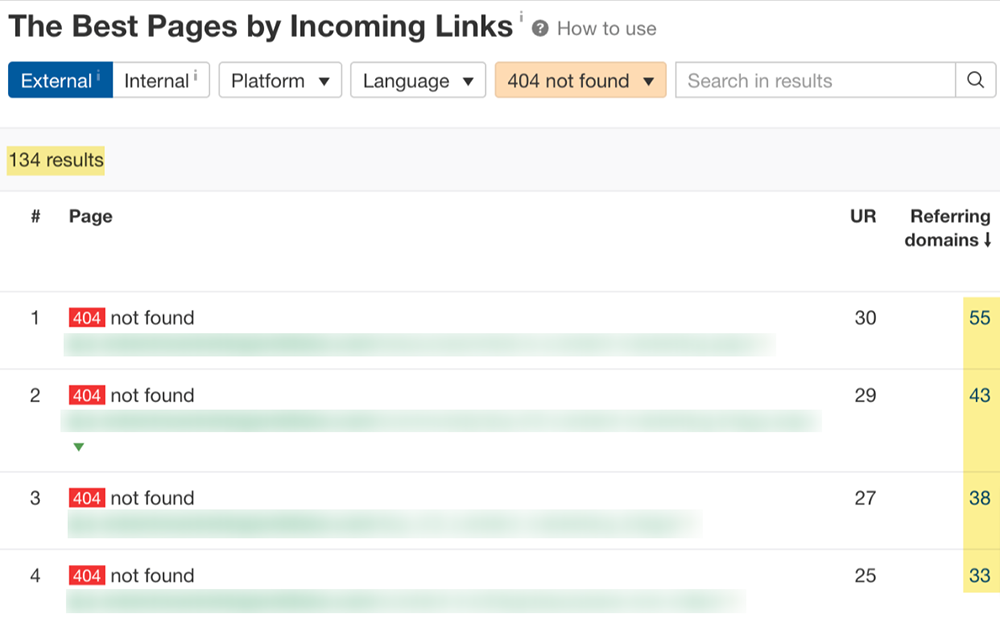eCommerce Link Building: A Guide to Effective Link Building Strategies
Building a strong online presence for eCommerce businesses is crucial for success. Most businesses would take the route of search engine optimisation to improve their visibility on search engine results pages (SERP).
Link building is among the most important ranking factors search engines consider while positioning any page on the SERP. Thus, eCommerce link building should be your top priority if you want to see your page rank higher on relevant searches.
When done correctly, it can increase your website’s authority, improve your search engine rankings, and ultimately drive more traffic to your eCommerce site. However, link building is a challenging and time-consuming task, and requires a well-planned strategy.
In this article, we will provide you with a comprehensive guide to effective eCommerce link building strategies to build quality links. But what is link building for eCommerce and how it can support your business objectives?
What is Link Building for eCommerce Sites & How Does it Work?
Link-building is a search engine optimisation tactic that most digital businesses use to increase their visibility and ranking on SERP. As a result of link-building methods, businesses gain backlinks to their website pages, which are an essential ranking factor.
eCommerce SEO link-building is a tailored approach where the eCommerce brand acquires backlinks by employing specific methods. Some link-building strategies like the product feedback technique work just for eCommerce.
Backlinks are of two types: Inbound links and Internal links. Inbound links are the ones that point to your website from other websites and are important as they help determine the ranking position. Internal links are the ones that point to other pages from within your site.
The best strategy for acquiring high-quality inbound backlinks is to create excellent linkable content assets that compel other site owners to link to from their content pages.
Additionally, you can reach out to other bloggers and publishers from your niche for link building opportunities. Further, in this guide, we’ll help you discover several eCommerce link building tactics that you can employ right away.
How Can eCommerce Link Building Support Your Business Objectives?
eCommerce link building not only helps you gain more backlinks from other sites but also increases footfall. Not building links is a big eCommerce SEO mistake because it leads to your site pages as far away from the top of the SERP.
The more quality links you acquire from high and trusted authority domains, the more Google and other search engines will consider ranking you at the top.
Businesses should not think of link building as a standalone activity but as an activity that connects to other aspects of brand building. Links may come naturally as a result of other activities that don’t primarily aim to acquire links.
For instance, let’s say you come up with a truly revolutionary product to sell on your eCommerce site. Since it's one of a kind product, many industry people would want to mention that in their content or on their website, getting you lots of links as a result.
Similarly, if you come up with a great piece of content that ranks higher & blows everyone’s minds, you are also likely to get so many links.
Since neither of these activities are created for the purpose of link building, but consequently, they tend to generate more links and support your business objectives.
That said, let’s have a look at some of the effective link-building strategies for eCommerce sites to implement:
9 Effective Link Building Tactics for eCommerce Brands
Now that we know what eCommerce link-building is and how it supports your business’s SEO objectives, let’s get to know some strategies you can implement:
1. Build Links Through Product Feedback Tactic
The product feedback tactic is where the best products in the industry get featured. Here, the bloggers or publishers have listed the best products and gave their honest opinion about them.
If your product hasn’t been featured on it, you can reach out and offer a sample of your product in return for feedback. However, before you reach out, make sure that your product is better than your competition.
Also, it’s important that bloggers should agree on it or they won’t feature your product. Here’s how you can use this approach for link building:
- Define the categories of products you want to increase sales for
- Google search the listicles about those product categories where you are not featured
- Now reach out to the blogger/publisher for feedback
Sometimes, the authors may not have tried your product, so it's vital that you reach out to them with a sample. Once you send a sample product, follow up with them after a couple of weeks and ask them to write a review.
If they find your product useful, they’ll consider including it in their listicle. And if not, consider that as valuable feedback to improve your product.
2. Run Guest Post Campaigns
Some industry experts believe that guest posting hasn’t remained as effective as it once was. However, it can still be effective if you consider quality over quantity.
In the early days, it was easier to improve your SERP rankings through guest post link building. However, it’s got a lot more competitive and search engines have got smarter in filtering low-quality content and spammy backlinks.
Here, you’d have to take a value-based approach where you put a lot of effort into creating useful and actionable content. Next, scour the internet to find high-authority sites to get your content published for mutual benefits.
However, the important step is to find suitable sites in your niche either with the keyword datasets to search on Google or use tools such as Ahrefs or SEMRush.
You can also analyse the backlink profiles of your competitors to identify sites that you can approach for guest posting campaigns. Once you have the list, start your guest posting outreach by finding the contact information of content editors and managers.
Pitch your ideas for a guest post or ask them to provide one so you create tailored content for their audience. Ensure to follow their brand guidelines such as tone, topic, preferences, and number of links to include in the post.
3. Convert Unlinked Brand/Product Mentions into Links
If your brand has a strong presence and other industry people often talk about you or your products, you may likely have several unlinked brand/product mentions.
Unlinked brand or product mentions provides an excellent opportunity to convert them into backlinks that point to your brand or a specific product page. It’s a great way to approach eCommerce link building because it can offer unparalleled ROI.
Any site on the internet that contextually mentions your brand or one of the products on your site provides you with a chance to suggest link insertion. All you have to do is find such pages with a mention and reach out to the host to ask if they are willing to link to your site or product.
Further, there are a few marketing tools that can help you track and monitor the brand mentions such as,
- Google Alerts
- Mention
- Talkwalker
- Awario, etc.
Using these small business tools, you can set up alerts and stay informed about where you are being mentioned. This will provide you with several opportunities to acquire some quality links to your eCommerce site.
4. List Your Products on “where to buy” Pages
Where to buy or Stockist pages list products and stores from where consumers can purchase those products. If you sell third-party products, you can check out their brand site for “where to buy” pages and contact them to include your site too. Here’s an example of Samsung:
To begin with this eCommerce link building strategy, make a list of all the brands you sell products of. You can find such a list using Ahrefs’ Site Explorer tool by entering a competing domain’s name and filtering the referring page report with “where to buy” or “Stockist”.
If such a page exists, you can reach out to the manufacturer and ask them for the inclusion of your eCommerce site. It not only helps you build links from authoritative sites but also aids in people finding a place to buy the products.
5. Set up Affiliate Marketing
An affiliate program is similar to a promotional program, except the people promoting your products earn a commission for every sale coming through their channels.
But how can affiliate marketing help you with link building for eCommerce websites?
Well, most affiliate marketers use affiliate links to promote your products, which helps track the traffic flow coming from the affiliate site to yours. Placing your affiliate links through different channels and blog content can help them earn revenue.
Besides giving your affiliate partners a chance to earn commission from sales they generate, affiliate links are legitimate backlinks that can influence how search engines see your site.
For instance, if you get an affiliate link from a well-established site or influencer, that backlink can boost your site’s domain ranking/authority. It’s like hitting two targets with one arrow!
6. Leverage Broken Link Building Tactic
Similar to brand mentions, this link building strategy involves discovering web pages that point to broken links. Broken links are the pages that have been removed and diverted to 404 errors.
Since these pages link to resources that aren’t available anymore, you can request site owners to replace them with an alternative resource on your site. However, you first need a list of all the relevant sites that link to your competitor’s broken pages.
You can easily extract a report for the same using tools such as Ahrefs. Analyse your competitor's links using the Site Explorer tool of Ahrefs to find a list of backlinks it has. If you don’t find relevant sites for one competitor, repeat the same for another.
Now that you know what sites link to your competitors' broken pages, the next step is to vet the link prospects. Does the broken page have good backlinks? Can you align your page with why those sites linked to a dead page?
Further, you want to check link quality aspects such as “DoFollow” links, domain ranking, traffic, etc. to assess if they are the right fit for you. Once that’s taken care of, create resources to replace those broken pages and reach out to the backlink providers with the same.
Bring their attention to the broken link problem and offer your replacement resources as a solution. Most site owners would be happy to remove the broken links from their site and replace them with yours, improving your backlink profile.
7. Make Donations
Many brands in the healthcare or real estate industry make donations to nonprofit or charitable organisations for good causes. Most NGOs and charitable organisations give credit to their donors by including their website links on their donation pages.
Charities or nonprofit organisations are considered trustworthy and locally relevant, and are always open to talk, and work for good causes. Thus, they become a prime target for eCommerce link building opportunities.
To acquire links from such high-authority and trustworthy resources, you can make lump sum donations, sponsor events, or offer scholarships. Link-worthy donations or events are hard to come by but doing it in a thoughtful and honest way will reap rewards for everyone.
8. Ask the Publisher to Give Image Credit Where It's Due
Any content such as images that you create is under the protection of the copyright act and anyone using it without your permission would only be allowed if they give proper credit.
Images like graphs, product photos, infographics, maps or others are embeddable resources. When someone embeds these images in their content, they potentially should link back to the original source e.g. your page.
Publishers may have used images from your website with improper attribution or without authorisation. Therefore, you can reach out to them and ask for proper attribution and link to the original source.
Most of the time, they’d agree to give you a link, generating essential backlinks for your eCommerce site hosted on Shopify or Magento.
9. Create Content Asset That Naturally Attracts Links
Content assets are another natural way to attract links from other websites to yours. Any helpful content such as practical tips, guides on your products, overviews, top list awards, and others not only works as effective communication but also establishes your niche expertise.
Additionally, you can create content assets such as industry statistics, infographics, calculators, eBooks, studies, etc., which publishers naturally want to link to from their content pieces.
Though it requires minimal outreach, often it works best with content distribution to get some initial traction. Once publishers realise the value of your content, they’d feel compelled to link to it, boosting your eCommerce link building count.
Link Your Way to The Top
Link building is a powerful way to improve your eCommerce brand’s visibility and drive more traffic and conversions to your site. However, effective link building takes time and requires consistent effort and a well-planned strategy from your side.
By implementing link building for small eCommerce sites outlined here, you can start building quality links for your website and stand out from the competition.
While implementing all the strategies may seem overwhelming, that’s where SEO agencies like Supple can swoop in. We have a team of expert link building professionals to help implement link building strategies for eCommerce at scale.
Get in touch with our expert professionals and link your way to the top of the Google SERP.
DIGITAL MARKETING FOR ALL OF AUSTRALIA
- SEO AgencyMelbourne
- SEO AgencySydney
- SEO AgencyBrisbane
- SEO AgencyAdelaide
- SEO AgencyPerth
- SEO AgencyCanberra
- SEO AgencyHobart
- SEO AgencyDarwin
- SEO AgencyGold Coast
- We work with all businesses across Australia









